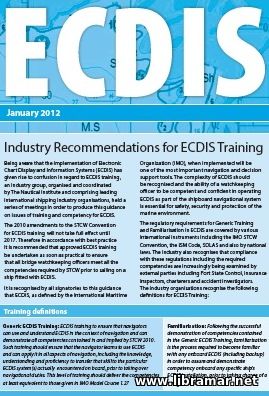 This is a very compact guidance; it was specifically prepared with participation of the several organizations respected in the maritime industry with the ultimate intention to duly address the major issues of competency and training for ECDIS, standing for the "Electronic Chart Display and Information Systems" - it was prepared by a special industry group coordinated by The Nautical Institute.
A series of meeting was held by this group, comprised of the leading international maritime industry organizations, since ECDIS had given rise to confusion in regard to training. The ECDIS-related amendments STCW Convention made in 2010 are still not in force and will take full effect only in 2017. Thus, it has been recommended that approved training be undertaken before that in order to ensure that all watchkeepers meet all STCW requirements prior to sailing on the vessels with ECDIS installed on them.
The document consists of only two pages. As it is clear from the title of this mini-publication, it is to address the today's requirements applicable to the electronic charts; apart from that, it deals with the generic ECDIS training and familiarization, provides valuable recommendations and also gives some information of the issues relating to the ECDIS training endorsed by the industry...
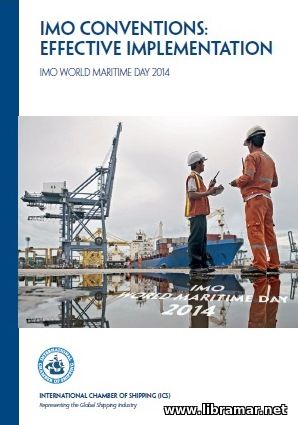 The official publication released in conjunction with the IMO Maritime Day. It is very short but still able to provide all interested persons and participants of the shipping industry with some useful information. The booklet starts with a short article dedicated to the implementation changes and the importance of the effective implementation.
It is obvious that in order to provide the effectiveness of the operations, the international maritime industry of today is seriously dependent on the regulatory frameworks that are established by the IMO as well as on the effective implementation of the international conventions released by this organization. The failure to follow these would eventually result in the chaos in the maritime industry and complete distortion of the shipping market. Another negative result would be reduction in the levels of marine safety and protection of the environment.
One of the most important and truly impressive features of the regulations proposed and implemented by the IMO would be that once they have entered into force, all of them are applied to the vessels globally via a very effective combination the inspections conducted by port state control and flag state inspectors. These instruments are deservedly considered very practical and play one of the key roles in the marine safety and environment protection...
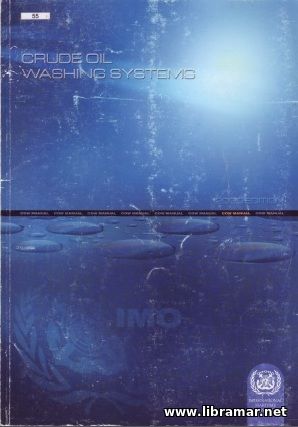 The present official IMO publication contains the revised specifications relating to the design, as well as control and operation of the COW, i.e. crude oil washing systems installed on board marine vessels carrying crude oil, the standard format for the COW operations and associated equipment manuals, informative examples of the above mentioned systems and manuals, and valuable guidelines for the in-port inspection of COW procedures.
The main purpose of the document is to provide users with all required technical info and related requirements. The book starts with the introductory sections defining its purpose and application, followed by the chapter containing general provisions. The next chapter addresses the design criteria applicable to the piping and washing machines, pumps, stripping systems and ballast lines.
The fifth chapter is fully dedicated to the personnel qualification, while the sixth deals with the actual operation, i.e. tankage, drainage/discharge, filling the tanks, COW at sea, use of the inert gas and its control, vapor emission, necessary safety precautions related to the electrostatic generation, oily water discharge etc. The last chapter gives the information about the operations and equipment manual. There are also three appendices at the end of the volume providing some additional information relating to the changes to the regulations, training of the personnel and agreed interpretations.
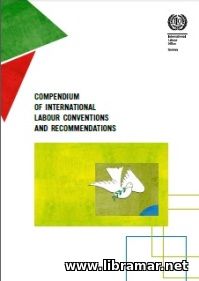 One of the key declared functions of the ILO is the adoption of the international conventions and recommendations of the issues directly related to the labor and the work. The preset publication was issued by the ILO and it addresses such the important topics as tripartite consultation, collective bargaining, forced labor, industrial relations, labor inspection and administration, wages, social security, working time, employment policy, promotion of the employees, elimination of the child labor, protection of young persons and children, maternity protection, equality of the opportunity and treatment, social policy, migrant employees, AIDS/HIV related issues, vocational training and guidance, seafarers, dockworkers, fishermen, tribal and indigenous people etc.
This collection contains a huge number of the useful relevant documentation and will definitely be of great use to any person working at sea and willing to be aware of his or her rights. It will also be helpful to the shore workers of the shipping companies, human resource departments, ship officers and others responsible for continuing compliance with all requirements of the labor-related conventions and associated recommendations.
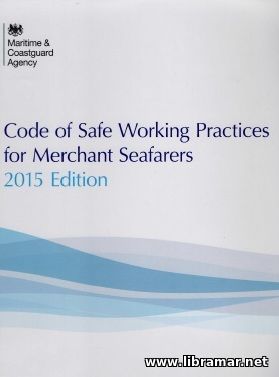 The present Code has been published by the MCA, i.e. Maritime and CoastGuard Agency and endorsed by the NMHOS Committee and other recognized organizations to serve as a guidance to the best established practices for the improvement of the H&S on board ships. The publication is aimed to anyone on a vessel regardless of their rank as well as to the people working ashore and responsible for safety; it shall be taken into account that the recommendations provided in this volume will only be effective if they are fully understood by all parties involved and only if there is due co-operation.
The workers not directly involved in a job in hand shall always be aware of what is actually being done in order to avoid any sort of risk. In cases where some of the risks are really unavoidable, the appropriate, adequate and effective measures of control shall be implemented so that the exposure to the hazards causing the injuries, diseases or deaths are minimized. These risks would include the ambient factors, inherent hazards, various serious health risks like fatigue and so many other risks, and all of them have been covered in this publication, making it so useful and practical for all people involved in maritime industry and willing to perform their activities in a safe manner.
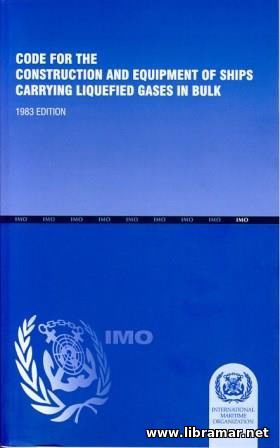 The present Code has been worked out and officially released aiming to provide the participants of the maritime industry with a recognized internationally used standard for the safe marine transportation of the liquefied gases plus some of the other substances that are listed in chapter XIX in bulk, through prescribing the constructional and design technical features of the vessels that are directly involved in such transportation together with the associated equipment that is required to be carried on board in order to minimize the risks associated with the gas carriage by sea.
The provisions of this Code are based in the sound marine engineering plus naval architecture principles and the best marine practices and proper understanding of potential hazards that may be posed by the various products being transported. the brief contents of the Code as follows: General; Vessel survival capability and cargo tank location; Ship arrangements; Cargo containment; Process pressure vessels and vapor, liquid and pressure piping systems; Construction materials; Cargo pressure and temperature control; Cargo vent systems; Environmental control for cargo containment systems; Electrical arrangements; Fire protection; Fire extinguishing; Mechanical ventilation in cargo area; Instrumentation; Personnel protection; Established filling limits for the cargo tanks; Use of cargo gas as fuel; Special requirements; operating requirements; Summary...
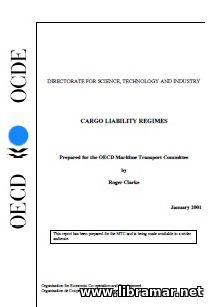 The present report has been worked out by the OECD Maritime Transport Committee and made available to a public. The document itself has been arranged in four major parts. The first part provides some pure introductory information. The second part addresses the existing regimes of maritime cargo liabilities, and their common elements and differences, in particular.
The third part of the paper is mainly dedicated to the existing regimes on which significant differences have been there. Finally, the fourth and last part of the booklet contains the valuable concluding remarks. There are also some annexes in the book providing the information supplementary to the main content of the publication. Subject annexes are covering the description of the project, list all organizations that have been consulted on July Paper, address the liability for the transported cargo on multi-modal journeys, providing some preliminary analysis of the subject issues.
The fourth annex presents a good technical comparison of the responsibilities taken by the carriers together with their liability for cargoes under the main regimes of cargo liability. And, finally, the last annex provides the readers with a comparison of various liability limits, and notice periods that are set for the notifications of damage or loss, plus the timelines for initiation of the associated legal proceedings under the above mentioned main cargo liability regimes.
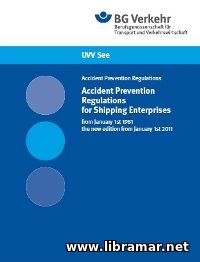 The compilation of applicable regulations released by the BG Verkehr. The content of the booklet is arranged in seventeen chapter. First chapter contains the general regulations, it provides the scope of application and definitions, describes the general duties of the employees and of insured persons, and also gives some instructions for the implementation.
The second chapter contains basic provisions while the third chapters is dedicated to the occupational physicians and also experts for the occupational safety. The next chapter is dealing with the special installation, their construction and equipment, plus operational requirement. The fifth chapter is addressing the hull equipment together with the construction and equipment. This one is followed by the chapter focusing on the machinery and electrical installations plus applicable operational requirements.
Remaining chapters of the publication cover the hazardous materials, fire protection and protection against excessive noise and mechanical vibration, catering and galley, closing devices such as shell doors, hatches and ramps, cargo handling arrangements and lifting devices, handling of the dangerous goods, fishing vessels, including stability, fire protection, lifesaving arrangements, mechanical/electrical, fishing and special equipment, diving work, tankers and passenger vessels, medical measures.
The final chapter of the book is solely dedicated to the transitional and final regulations.
|







